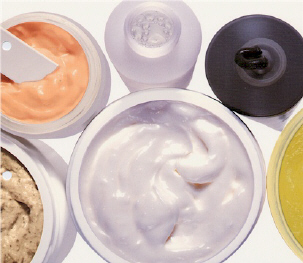* A preservative
* Also known as Ethylene Glycol Monophenyl Ether
* Please read TIA’s articles on What Is It: Phenoxyethanol and Is It Safe? and The FDA’s Warning on Phenoxyethanol
* Please read TIA’s other articles on What Is It: Preservatives and Parabens and Are They Safe? and What Is It: Natural Preservative Alternatives to Phenoxyethanol and Parabens
Functions:
Phenoxyethanol, also known as Ethylene Glycol Monophenyl Ether, is a glycol ether and bactericide (that functions as a disinfectant, antiseptic or antibiotic) that is primarily used as a preservative in cosmetics and beauty products. It is also seen as a fragrance additive, a fixative for perfumes, an insect repellent ingredient in sunscreens, a topical antiseptic ingredient, and solvent (Wikipedia).
Phenoxyethanol has become a widely used ingredient because of its previously positive reputation as a relatively gentle preservative that is considered non-irritating; it is also one of the few preservatives that does not release formaldehyde. The CIR approves it for use and it is most often used as a preservative because of its ability to kill bacteria and stabilize formulas, extending their shelf life and making them safe for use (Source).
Safety Measures/Side Effects:
However. Studies have shown that Phenoxyethanol can be an extreme irritant to the eyes and skin, and can even cause blistering; it is hazardous in the case of ingestion and inhalation as well. The Cosmetic Database rates it as a moderate hazard and notes cancer, allergic reactions, skin, eye and lung irritation, organ and neurotoxicity as possible effects of using products containing Phenoxyethanol. It has shown effects on sensory organs even at low doses, and brain and nervous systems at moderate doses in animals, and causes cell mutation.
According to research, the EPA (Environmental Protection Agency) data sheets show “chromosomal changes and genetic mutation effects in testing as well as testicular atrophy and reproductive damage in mice.”
Parabens
Parabens get a bad rap. Some products proclaim themselves paraben-free. But are they really that bad and isn’t the stuff that they prevent (the formation of nasty bacterias) potentially more harmful? What about the alternatives? Do they work and are they safer?
Parabens are preservatives and they are incredibly ubiquitous; you will find them in cosmetics and all manner of hair care products. They are esters of para-hydroxybenzoic acid and common parabens include: methylparaben (which can occur naturally in blueberries), propylparaben, butylparaben. Less common are isobutylparaben, isopropylparaben and benzylparaben.
The fuss started when a study linked parabens in deodorant to breast cancer. Because parabens mimic human estrogen and it is known that estrogen stimulates cancer, the link seemed plausible. The study has since been discredited and the American Cancer Society has concluded that there is no scientific evidence of parabens increasing breast cancer risk.
So if parabens are by and large not carcinogenic, what’s not to like? Allergies to individual parabens are rare, but there is a high incidence of cross-reaction so a combination of parabens in one product increases the liklihood of a reaction. Many cosmetic and hair products contain up to four or five parabens.
Paraben Safety
In 1984, 2003, and 2005 the Cosmetic Ingredient Review (CIR), an industry-sponsored organization which reviews cosmetic ingredient safety and publishes its results in open, peer-reviewed literature, investigated the safety of parabens. All three times the CIR concluded that parabens were safe as long as they did not constitute more than 25% of a product’s content. Once again let me point out that parabens are found in levels ranging from 0.01% to 0.3% in skincare products. Additionally, the FDA has determined that parabens are safe for use in cosmetic products.
How To Determine If The Product You Have Has Parabens
Parabens are actually very easy to identify on your skincare product label since they all end with “paraben”. You’ll find them at the very bottom of the list of ingredients. Skincare products that are paraben-free usually list that somewhere on the front of their label. If you do choose to go the paraben free route keep in mind that these products will spoil quicker than those with chemical preservatives in them. Look for expiration dates, and if the product doesn’t have an expiration date call the manufacturer (by law the manufacturer’s phone number must be on the label) to find out the product’s shelf life.
See..the stuff found in almost everything related to makeup and beauty..is so harmful 🙁
What are your thoughts about it ?
